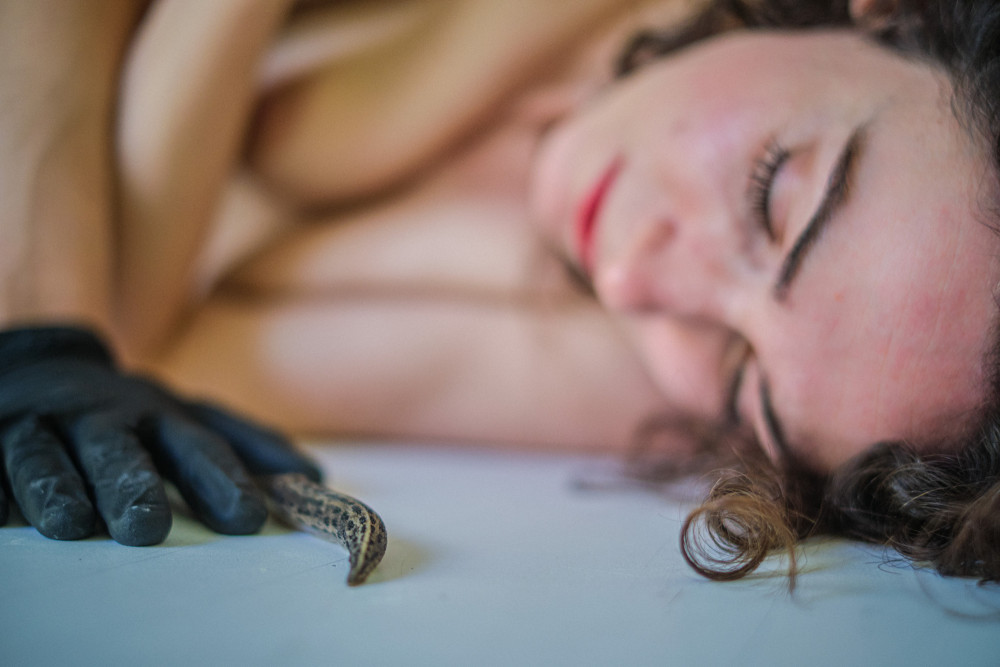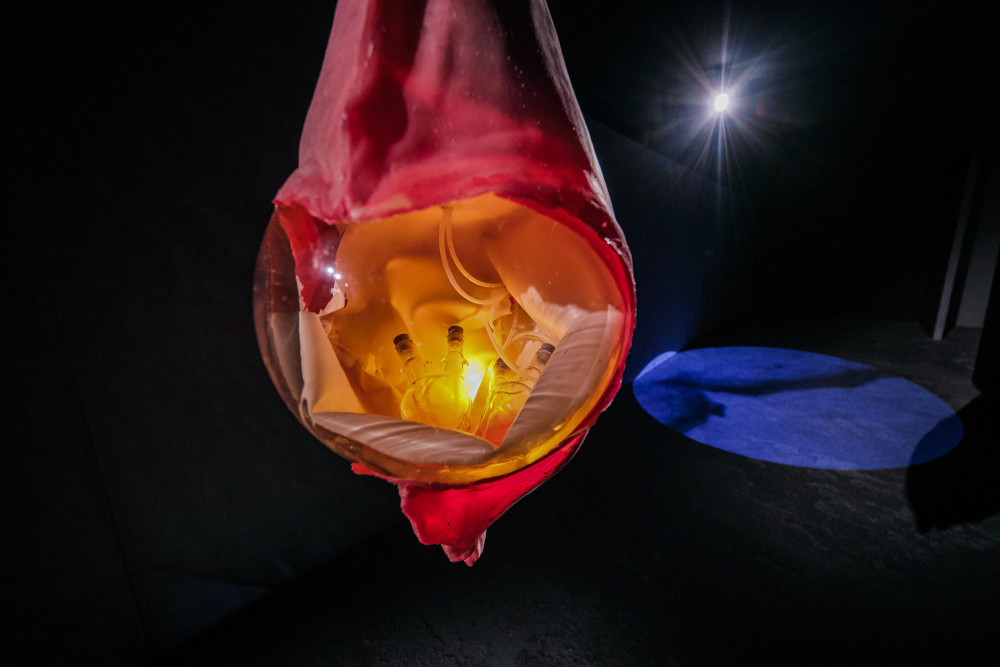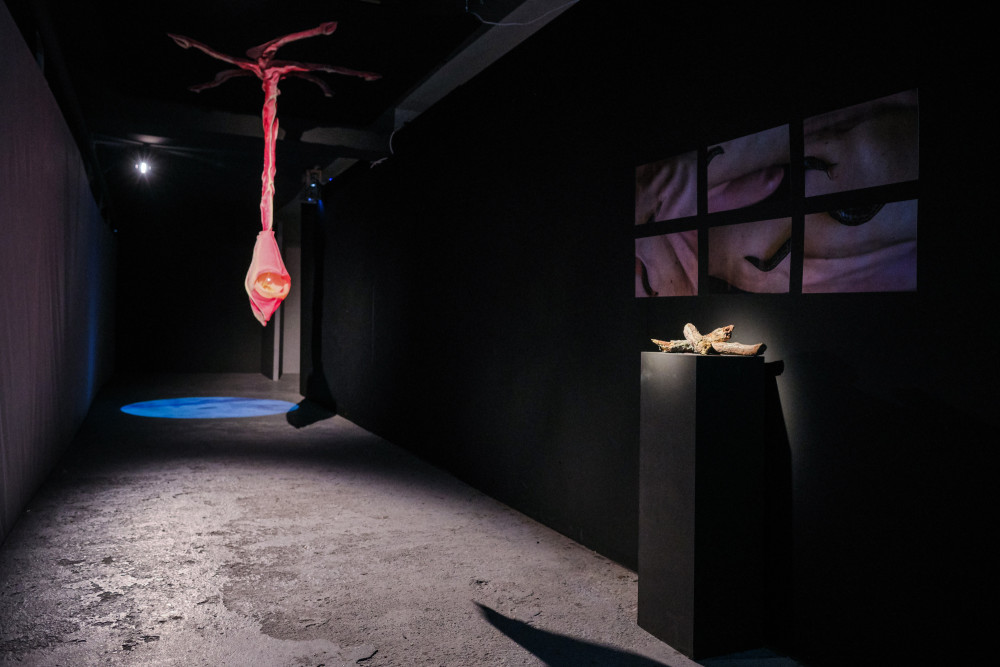In the installation, a custom-made extra-bodily organ hosts two cell cultures in a hybrid ecosystem: The vaginal epithelial cells of Margherita Pevere and slug egg cells. They share a growth medium and communicate chemically through it. Wombs is a dance of two organisms at a cellular level. The two cell types display a radically different behaviour: the human cells divide, and small fragments of extra-bodily tissue become visible to the naked eye. Slug cells, instead, do not divide. They are alive but remain suspended. The growth medium is infused with human sex hormones which affect the primordial biochemical communication between cells.
Wombs investigates the cisgender female body as a biochemical cyborg: hormonal contraceptives modulate human sexual organs to prevent pregnancy, thus accompanying the sexuality of women. Moreover, they inscribe the individual experience into a biopolitical sphere, as they may trigger the endocrine system of other organisms on release into the ecosystem through urine.
Realized within the framework of the European Media Art Platforms EMARE program at KONTEJNER | bureau of contemporary art praxis, with the support of the Creative Europe Programme of the European Union.
The artwork is part of Margherita Pevere practice-based PhD in Artistic Research at Aalto University, School of Arts, Design and Architecture, supported by Kone Foundation.
Biotechnological advisor: Gjino Šutić - UR Institute
Preliminary research at Biofilia Laboratory – Base for Biological Arts, Aalto University
Production manager: Josipa Vukelić, Jurica Mlinarec (KONTEJNER)
Photography: Sanjin Kaštelan, Margarita Koši, Margherita Pevere
Flameworking: Ivanka Pašalić - Association Stakleni svijet
Video: Ivan Šardi
Special thanks to dr. Božidar Perić, Ivan Skvrce (Academy of Fine Arts, Zagreb), Branko




